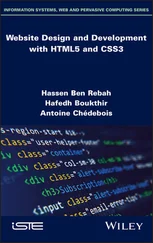1 ...6 7 8 10 11 12 ...25 This project is the culmination of five years of research, collating relevant materials from organizations, institutions, companies and publishers, developing Excel spreadsheet programs and computer programs; using Honeywell’s UniSim steady state simulation programs and providing the majority of the drawings in the text.
Sincere gratitude to Honeywell Process Solutions for granting permission to incorporate the use of UniSim Design simulation and many other suites of software programs in the book. I express my thanks to Dr. Jamie Barber of Honeywell Process Solutions for his friendship and help over many years of using the UniSim software. To Mr. Ahmed Mutawa formerly of SASREF Co., Saudi Arabia for developing the Conversion Table program for the book.
Many organizations, institutions and companies as Gas Processor Suppliers Association (GPSA), USA, Honeywell Process Solutions, Saudi Aramco Shell Refinery Co., (SASREF), Absoft Corporation, USA., American Institute of Chemical Engineers, The Institution of Chemical Engineers, U.K., Chemical Engineering magazine by Access Intelligence, USA., Hydrocarbon Processing magazine have readily given permission for the use of materials and their release for publication. I greatly acknowledge and express my deepest gratitude to these organizations.
I have been privileged to have met with Phil Carmical, Publisher at Scrivener Publishing Co., some twenty years ago. Phil initiated the well-known Ludwig’s project at the time during his tenure at Gulf Publishing Co., and Elsevier, respectively. His suggestions in collaborating on these important works some seven years ago were timely to the engineering community, as I hope that these works will be greatly beneficial to this community world-wide. I’m deeply grateful to Phil for agreeing to collaborate with me, his suggestions and assistance since. It is my believe upon completing this aspect of the project that the book will save lives in the refinery industry.
I also wish to express my thanks to the Wiley-Scrivener team: Kris Hackerott-Graphics Designer, Bryan Aubrey – Copy editor, Myrna Ting – Typesetter and her colleagues. I am truly grateful for your professionalism, assistance and help in the production of this volume.
Finally,
Bow down in humility before the Greatness of God,
whose Love is never-ending, and who sends us his help at all times.
He alone is Life and the Power and the Glory for ever and ever.
A. Kayode Coker
13 Rules of Thumb—Summary
13.0 Introduction
An engineering Rule of Thumb is an outright statement regarding suitable sizes or performance of equipment that avoids all requirements for extended calculations. These are safely applied by engineers who are substantially familiar with the topics. However, such rules should be of value for approximate design and cost estimation, and should not provide the inexperienced engineer with perspective and a foundation where detailed and computer-aided results can be determined.
Experienced engineers often know where to find information and how to make accurate calculations; they also retain a minimum body of information in mind, which is made up largely of shortcuts and heuristics. The compilation below may fit into such a minimum body of information that boosts to the memory or extension in some instances into less often encountered areas.
COMPRESSORS, FANS, BLOWERS, AND VACUUM PUMPS
1 1. Fans are used to raise the pressure by about 3% [12 in. (30 cm) water], blowers raise to less than 2.75 barg (40 psig), and compressors to higher pressures, although the blower range is commonly included in the compressor range.
2 2. For vacuum pumps use the following:Reciprocating piston typedown to 133.3 Pa (1 torr)Rotary piston typedown to 0.133 Pa (0.001 torr)Two lobe rotary typedown to 0.0133 Pa (0.0001 torr)Steam jet ejectors1 stage down to 13.3 k Pa (100 torr)3 stage down to 133.3 Pa (1 torr)5 stage down to 6.7 Pa (0.05 torr)
3 3. A three-stage ejector needs 100 kg steam/kg air to maintain a pressure of 133.3 Pa (1 torr).
4 4. In-leakage of air to evacuated equipment depends on the absolute pressure (torr) and the volume of the equipment, V in m3 (ft3), according to W = kV2/3 kg/h (lb/h), with k = 0.98 (0.2) when P > 90 torr, k = 0.39 (0.08) when P is between 0.4 and 2.67 kPa (3 and 20 torr), and k = 0.12 (0.025) at p less than 133.3 Pa (1 torr).
5 5. Theoretical adiabatic horsepower where T1 is inlet temperature in Rankine, R = °F + 460 and a = (k − 1)/k, k = Cp/Cv. Theoretical reversible adiabatic power = mɀ1RT1[({P2/P1}a − 1)]/a, where T1 is inlet temperature, R = Gas Constant, ɀ1 = compressibility factor, m = molar flow rate, a = (k − 1)/k and k = Cp/Cv. Values of °R = 8.314 J/mol K = 1.987 Btu/lb mol R = 0.7302 atm ft3/lb mol° R.
6 6. Outlet temperature for reversible adiabatic process
7 7. To compress air from 37.8° C (100°F), k = 1.4, compression ratio = 3, theoretical power required = 62 hp/million ft3/day, outlet temperature 152.2°C (306°F).
8 8. Exit temperature should not exceed 167–204° C (350–400° F); for diatomic gases (Cp/Cv = 1.4), this corresponds to a compression ratio of about 4.
9 9. Compression ratio should be about the same in each stage of a multistage unit, ratio = (Pn/P1)1/n, with n stages.
10 10. Efficiencies of reciprocating compressors: 65% at compression ratio of 1.5, 75% at 2.0, and 80–85% at 3–6.
11 11. Efficiencies of large centrifugal compressors, 2.83–47.2m3/s (6000–100,000 acfm) at suction, are 76–78%.
12 12. Rotary compressors have efficiencies of 70%, except liquid liner type which have 50%.
CONVEYORS FOR PARTICULATE SOLIDS
1 1. Screw conveyors are suited to transport of even sticky and abrasive solids up inclines of 20° or so. They are limited to distances of 3.81 m (150 ft) or so because of shaft torque strength. A 304.8 mm (12 in.) diameter conveyor can handle 28.3–84.95 m3/h (1000–3000 ft3/h), at speeds ranging from 40 to 60 rpm.
2 2. Belt conveyors are for high capacity and long distances (a mile or more, but only several hundred feet in a plant), up inclines of 30° maximum. A 609.6-mm (24 in.) wide belt can carry 84.95 m3/h (3000 ft3/h) at a speed of 0.508 m/s (100 ft/min), but speeds up to 3.048 m/s (600 ft/min) are suited to some materials. Power consumption is relatively low.
3 3. Bucket elevators are suited to vertical transport of sticky and abrasive materials. With 508 × 508-mm (20 × 20-in.) buckets, capacity can reach 28.3 m3/h (1000 ft3/h) at a speed of 0.508 m/s (100 ft/min), but speeds up to 1.524 m/s (300 ft/min) are used.
4 4. Drag-type conveyors (Redler) are suited to short distances in any direction and are completely enclosed. Units range in size from 19.4 × 10−4 to 122.6 × 10−4 m2 (3–19 in.2) and may travel from 0.15 m/s (30 ft/min) (fly ash) to 1.27 m/s (250 ft/min) (grains). Power requirements are high.
5 5. Pneumatic conveyors are for high capacity, short distance (122 m (400 ft)) transport simultaneously from several sources to several destinations. Either vacuum or low pressure 0.4–0.8 barg (6–12 psig) is used with a range of air velocities from 10.7 to 36.6 m/s (35–120 ft/s); depending on the material and pressure and air requirements, 0.03–0.2 m3/m3 (1–7 ft3/ft3) of solid is transferred.
1 1. Water in contact with air under adiabatic conditions eventually cools to the wet bulb temperature.
2 2. In commercial units, 90% of saturation of the air is feasible.
3 3. Relative cooling tower size is sensitive to the difference between the exit and the wet bulb temperatures:∆T, °F51525Relative volume2.41.00.55
Читать дальше












